By Barret Halgas, MD


By Barret Halgas, MD


HIGH WYCOMBE, England, Nov. 9, 2022 /PRNewswire/ — Firstkind Ltd, innovator and manufacturer of the clinically proven geko™ device – a ground-breaking advanced therapy for chronic venous leg ulcer healing – is seeking senior tissue viability nurses, willing to embrace and drive innovation advance, to join its Partner-With-Us program.

The geko™ device on the leg
The Partner-With-Us program precedes the imminent publication of a statistically significant randomised controlled study that compares the rate of wound healing in chronic venous leg ulcer patients receiving the geko™ device as an adjunct to compression therapy, compared to compression therapy alone.
A transformative innovation, the geko™ device is a small, self-adhesive, wearable neuromuscular electro-stimulator (NMES) that is applied to the skin just below the knee, over the head of the fibula. It delivers a gentle intermittent electrical pulse, once per second, to the common peroneal nerve. This elicits a muscular twitch that activates the calf and foot muscle pumps, increasing venous, arterial, and microvascular blood flow – transporting oxygenated blood to the wound bed and edge to promote wound healing.
In addition to the benefit of better patient outcomes and the release of significant cost savings for primary care, TVNs keen to join the Partner-With-Us program – to drive innovation advance – will gain:
If you would like to know more about the Partner-With-Us program, and what the geko™ device can do for your patients, please email: Fiona.Young@firstkindmedical.com. We look forward to hearing from you soon.
About Firstkind Ltd (a Sky Medical Technology Company)
Firstkind Ltd is a UK-based medical devices company. Through its innovative mechanism of non-invasive neuromuscular electrostimulation (NMES), Firstkind has developed a ground-breaking NMES technology platform, OnPulse™, embedded in its industry-leading product, the geko™ device. The company develops a range of products tailored to the needs of different medical application areas, selling both direct and through strategic partnerships or distributors in each major clinical area. Clinical areas of focus include chronic wound healing, the treatment and prevention of oedema (swelling) and venous thromboembolism prevention (VTE). The goal in each therapy is to partner with healthcare professionals to improve clinical outcomes and patient care while at the same time reducing costs for health systems.
This article was originally published here

Dr. Tracey Rickards, BN, RN, MN, PhD Associate Professor, Faculty of Nursing, University of New Brunswick


Jennifer Spector, DPM, FACFAS, Assistant Editorial Director
SIERRA MADRE, Calif., Nov. 10, 2022 /PRNewswire/ — Our doctors, nurses, and clinicians have been at the front lines of treating the consequences of diabetes every day. With over 20 years of supporting wound centers, we’ve learned 2 important truth’s about diabetes:
Diabetes continues to grow at an alarming rate
More action and education are needed

Steal this Diabetes Month Resource Kit: thewca.com/2022/11/01/steal-this-diabetes-month-resource-kit/
To commemorate November’s National Diabetes Awareness Month, Wound Care Advantage does not want to focus on the statistics of Diabetes. Like the 37 million people suffering from diabetes, or the fact that up to 34% of those patients will develop a foot ulcer (DFU) in their lifetime, and that DFUs are the number one leading cause of non-traumatic amputations. Instead, we realize that diabetes is not going anywhere anytime soon, nor is the knowledge that if not managed properly, diabetes can lead to serious and fatal outcomes.
This is why this November, WCA is giving Wound Programs a Diabetes Month Resource Kit to build awareness of diabetes and the high risk of chronic wounds. With 70% of diabetic foot ulcers ending in amputation and leading to a 2-year life expectancy after surgery, wound care programs deserve the support and resources to save the limbs and lives of all patients. Help us put a spotlight on this disease with our free Diabetes Month Resource Kit. Steal our professional resources for your clinic.
Our Resource Kit will supply you with:
Even with the disease of diabetes keeping its alarmingly quick growth rate, the population of patients that develop an ulcer that leads to an amputation does not have to. Join us in building the awareness that 70% of DFU patients do not need to end with an amputation this November.
Diabetes Month Resource Kit: thewca.com/2022/11/01/steal-this-diabetes-month-resource-kit/
About Wound Care Advantage:
Founded in 2002, Wound Care Advantage (WCA) has been supporting wound centers for 20 years. With a strong commitment to care and innovation, WCA advocates for the financial independence of partner hospitals and the rapid healing of patients they serve. Wound Care Advantage is a privately held company headquartered in Sierra Madre, California. For additional information, visit www.thewca.com.
SOURCE Wound Care Advantage

Roberto Cassino, MD, Sacra Famiglia Korian Nursing Home, Italy

Tuesday, November 29, 2022 | 2:00 – 3:00pm ET Daniel L. Kapp MD



dehydrated human amnion chorion membrane for use in pressure injuries Michael Sabolinski, MD, Sabolinski LLC, Franklin, MA
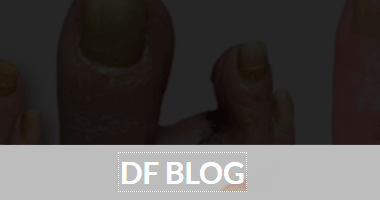
Alik Farber, Matt Menard and Ken Rosenfeld


Margaret Hiler MSN, RN, CWOCN
The North American Center for Continuing Medical Education, LLC (NACCME), the CE-sponsor for the Symposium on Advanced Wound Care (SAWC) Spring and Fall meetings, and SAWC co-host, HMP Communications, LLC, today announced the inaugural class of five SAWC Spring scholarship winners, selected in cooperation with several prominent wound care societies and associations.
The SAWC Spring and SAWC Fall meetings are the largest wound care conferences in the United States with 2,000+ attendees expected at the 25th annual SAWC Spring and Wound Healing Society (WHS) Meeting to be held, April 19 -22, 2012 in Atlanta, Georgia. Wound care is predominately a multidisciplinary focused practice with optimal outcomes often provided by a team including physicians, podiatrists, therapists and nurses. The SAWC Spring scholarships not only target these clinical specialties but wound care fellows and researchers as well.
The owners of SAWC Spring have reached out to several major wound care societies and associations, along with key opinion leaders, to choose the inaugural 2012 SAWC Spring class of honorees. The five SAWC Spring scholarship winners will be honored during the annual SAWC Spring VIP Party to be held on Thursday night, April 19, 2012, at the Terraces Restaurant in the Georgia World Congress Center. Each of the scholarship winners will receive complimentary registration to SAWC Spring/WHS along with a framed certificate presented by their sponsor during the ceremony.
The inaugural list of SAWC Spring scholarship winners at the 2012 SAWC Spring/WHS Conference includes:
“Wound Healing Fellow Scholarship” – Malgorzata Plummer, MD, Assistant Professor of Clinical Surgery, Section of Wound Healing and Tissue Repair, University of Illinois at Chicago,
Presenter – William Ennis, DO, MBA, FACOS, President, American College of Wound Healing and Tissue Repair (ACWHTR)
“Wound Care Nursing Scholarship” – Sue Girolami, RN, BSN, CWOCN, Clinical Manager, Therapy Support, Inc.
Presenter – Terry Treadwell, MD, FACS, President, Association for the Advancement of Wound Care (AAWC)
“Wound Healing Research Scholarship” – Kenneth Finnson, PhD, Research Associate, Montreal General Hospital, McGill University Surgical Research
Presenter – Harriet Hopf, MD, President, Wound Healing Society (WHS)
“Wound Care Therapist Scholarship” – Jaimee Haan, PT, CWS, Team Leader – Physical Therapy Wound Management Department, University of Indiana Health
Presenter – Rose Hamm, DPT, CWS, President – American Physical Therapy Association (APTA) Wound Management Special Interest Group (WMSIG)
“Wound Care Training Scholarship” – Jeffrey S. Danetz, MD, FACS, Medical Director, Edward White Hospital Wound Center and Largo Medical Center Wound Center
Presenter – Robert Kirsner, MD, PhD, Co-Chairperson, SAWC
Recognizing the importance of appropriate and timely wound care in high-risk patient populations, and in concert with SAWC Spring/WHS, Georgia Gov. Nathan Deal has proclaimed April 2012 to be “Chronic Wound Care Month.”
For more information on the 25th Annual SAWC Spring/WHS meeting being held in April 19–22, 2012 in Atlanta, GA, please visit http://spring.sawc.net/ or contact Tiffney Oliver at 609-630-6223.
About NACCME
The North American Center for Continuing Medical Education, LLC (NACCME), an HMP Communications Holdings Company, provides the highest quality CME/CE across medical disciplines and therapeutic areas. In conjunction with top medical faculty, NACCME develops evidence-based initiatives that target specific educational needs, assisting healthcare professionals in improving patient outcomes by bridging the gap between current and best healthcare practices.
About HMP Communications, LLC
HMP Communications, LLC (HMP), is a leader in healthcare communications and education. It publishes some of the nation’s most well-respected journals in three key medical arenas — wound care/podiatry, cardiovascular and life sciences — representing 14 specialties. HMP also offers more than 20 years of meeting management/production expertise and over a decade producing cutting-edge, online educational programs. HMP’s portfolio of wound care/podiatry journals includes; Ostomy Wound Management, WOUNDS, Podiatry Today and Today’s Wound Clinic.
This article was originally published here

the Concerning Trend Involving Skin Pigmentation and a Role for Fluorescence Imaging

by Caroline Fife, M.D. from Oct 11, 2022

Lilibeth Acero, BS, RN, DAPWCA

Treatment Outcomes at a Tertiary Hospital in South-Western Uganda Authors Sikhondze MM , Twesigye D, Odongo CN , Mutiibwa D, Tayebwa E, Tibaijuka L , Ayana SD, Cabrera Dreque C

by Navin Kumar Verma, Nanyang Technological University Singapore
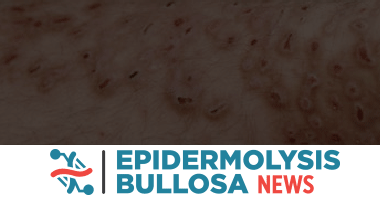
Abeona hopes to submit FDA application for therapy’s approval by mid-2023 by Lindsey Shapiro, PhD

of Type 2 Diabetes Mellitus Patients Associated with Diabetic Foot Ulcer


with Its Patented Regenerative Solution D’OXYVA with Recovered CO2

SIERRA MADRE, Calif., Oct. 27, 2022 /PRNewswire/ — Delayed wound care can mean a limb or a life, many times both, for a patient with a non-healing wound. With the rate of patients living with a chronic wound nearing the 7 million mark in the United States, and 2 million of those suffering from a diabetic foot ulcer, the need for advanced wound care is greater than ever.

Wound care is vital for patients and their communities. Keeping every center open and financially viable has been our mission for 20 years. Today we give back some of that wisdom, knowledge, and experience from 20 years of supporting wound centers. This free crash course is for hospital leaders, future leaders, or anyone interested in wound care. 🎬 Watch Now: thewca.com/crash-course
However, in the midst of this “silent” epidemic, wound care programs are finding themselves having to fight to keep their doors open. And when they are open, many are without the support they deserve. Which is why keeping every center open and financially viable has been our mission for the last 20 years. Within these trying times, we want to offer more than just words of wisdom with our “Steal This” series available to all wound care programs throughout the nation.

Steal this Crash Course. 🎬 Watch our crash course for free: thewca.com/crash-course
“Steal This” is exactly what it sounds like. We want all programs to steal our ready-made resources and wound care education to use immediately. This is in hopes to help ease some of the stress wound care programs are facing in today’s world, and be a figure of support to all in the industry.
The first “Steal This” will be the release of the Program Leadership Crash Course series. In this free course for industry leaders, we help navigate the challenges of day to day tasks, and will cover all aspects of running a successful program. Along with each topic is a supplemental resource book that includes need to know information, questions you should be asking yourself, and action steps to do today. Steal it, use it, and heal more wounds with the Program Leadership crash course where we give back the wisdom, knowledge, and experience we’ve gained through-out the 20 years of supporting wound centers.
For more information about Crash Course, please visit www.thewca.com/crash-course
About Wound Care Advantage:
Founded in 2002, Wound Care Advantage (WCA) has been supporting wound centers for 20 years. With a strong commitment to care and innovation, WCA advocates for the financial independence of partner hospitals and the rapid healing of patients they serve. Wound Care Advantage is a privately held company headquartered in Sierra Madre, California. For additional information, visit www.thewca.com.
SOURCE Wound Care Advantage
This article was originally published here

Keith Loria

Jesse Obregon, Lauren DeLamielleure, Taha F. Rasul, Brittany Blake, Armen Henderson

John C. Smith, Marco Comianos, Wesley Tang, Satish Sarvepalli





Abigail Chaffin, MD

JACKSONVILLE, Fla., Nov. 1, 2022 /PRNewswire/ –As millions of Americans living with diabetes are also living with chronic wounds that won’t heal, Healogics® is raising awareness of diabetes-related wounds as part of the Healogics ninth annual Diabetes Awareness Campaign.
Throughout November, Wound Care Centers® will educate the local community about the importance of awareness, early intervention and specialized care for diabetes-related chronic wounds, like diabetic foot ulcers. Local team members will also visit healthcare providers in surrounding areas to provide important information to help at-risk patients living with diabetes.

Diabetes Awareness Infographic
There are more than 37 million Americans currently living with diabetes, according to the American Diabetes Association (ADA). Additionally, there are 96 million American adults who have prediabetes, leading to 1.4 million new diagnoses of diabetes every year. Diabetes-related wounds are a leading cause of limb loss, accounting for nearly 70 percent of cases undergoing lower extremity amputation in the United States.
“This campaign is essential because early detection of diabetes-related wounds significantly reduces amputation risks. Diabetic foot ulcers are the leading cause of diabetes-related hospitalizations and lower-limb amputations. What starts as a small cut or blister can quickly progress into a non-healing wound with severe complications. With 50 percent of our patient population living with diabetes, we know firsthand that our awareness efforts can help improve the lives of those struggling with diabetes-related wounds,” said Healogics Chief Executive Officer Frank Williams.
Many suffering from chronic wounds have been negatively affected by the COVID-19 pandemic as they have eschewed needed care during the past two-plus years. Untreated and undertreated wounds have resulted in amputation, according to a study from the ADA. Of the patients who have undergone one amputation, 55 percent will require amputation on the second leg. An amputation results in decreased quality of life, increased medical costs and a significantly higher risk of mortality.
“Many people who come to the Wound Care Center® with chronic wounds are among the 37 million adults living with diabetes. Some were unaware that diabetes put them at greater risk for non-healing wounds. Encourage patients to check their feet every day. It’s imperative we help patients avoid the serious consequences of non-healing wounds, such as diabetic foot ulcers, by raising awareness of the risks and importance of daily foot screenings to help prevent an avoidable amputation,” said Healogics Chief Medical Officer Dr. William Ennis.
Factors that may increase the risks of developing a chronic wound, such as a diabetic foot ulcer, include high blood sugar levels, poor circulation, immune system issues and nerve damage. Risk factors for diabetes include age, diet, activity level, obesity and heredity.
Healogics recommends the following to help prevent diabetic foot ulcers:
Early detection and specialized care from a Wound Care Center® can reduce healing times and significantly reduce the risk of amputation.
Contact Healogics to learn more about diabetic foot ulcers or if you have a wound that will not heal. To schedule an appointment, please call 1-800-379-9774 or visit Healogics.com.
About Healogics
Headquartered in Jacksonville, Fla., Healogics is the nation’s wound healing expert. Last year over 300,000 patients received advanced wound care through a network of over 600 Wound Care Centers. Healogics also partners with over 300 skilled nursing facilities to care for patients with chronic wounds and provides inpatient consults at more than 60 partner hospitals. As the industry leader, Healogics has the largest repository of chronic wound-specific patient data in the country. The Healogics Wound Science Initiative offers peer-reviewed research and advanced analytics in the pursuit of not only better outcomes, but a better way to provide care.
SOURCE Healogics, LLC
This article was originally published here


David G. Armstrong, DPM, MD, PhD




Nancy Collins, PhD, RDN, LD, NWCC, FAND

A Randomized Controlled Trial

Two leading wound industry solutions companies, with a shared passion for improving patient outcomes, are collaborating to improve the way that Home Health and other in-home providers care for patients with chronic wounds.
SAVANNAH, GA. (PRWEB) OCTOBER 24, 2022
HARTMANN USA and Corstrata announce their collaboration to support home health and other in-home providers in caring for wound patients at a time when the incidence of complex chronic wounds is increasing while access to wound care nurse specialists is becoming more challenging. At the core of a successful wound care program is access to both highly effective advanced wound dressings as well as clinical expertise to implement evidence-based treatment protocols and monitor wounds to closure. According to a recent study published by top-50 accounting firm BerryDunn, National Healthcare at Home Best Practices and Future Insights Study, 100% of Home Health Centers of Excellence (those Home Health agencies in the top 10% for quality and patient satisfaction and with a positive financial surplus) have a wound-certified specialist on staff.
This collaboration will increase access to Corstrata’s team of virtual board-certified wound nurses (WOC nurses) and HARTMANN’s suite of advanced wound care products to improve clinical and financial outcomes for in-home providers that care for patients with chronic wounds.
HARTMANN has been providing advanced wound dressing solutions globally for over 150 years and has evolved with its broad portfolio of high-quality, cost-effective products that provide home health clinicians with a simplified, consistent approach for effectively managing wounds. Corstrata provides virtual wound and ostomy care management nationwide across multiple provider settings, including home health, skilled nursing facilities, hospice, and emerging hospital-at-home solutions companies.
According to Jon Procopio, Managing Director of HARTMANN USA, “Patient care is our priority. HARTMANN strives to enable the progression of the wound towards complete healing that patients deserve and strengthen the confidence that healthcare professionals need to provide wound care. We have a nationwide team of dedicated account and customer care representatives specifically trained for consultation, education, and support in offering clinical and business solutions. Now, with Corstrata, we will enhance access to clinical expertise related to wound care through their team of certified WOC nurses.”
“The Corstrata team is excited about this important collaboration with HARTMANN to create access to Corstrata’s virtual WOC nurses for customers and the patients they serve. With up to one-third of all home health and hospice patients having a chronic wound, it is critical for clinicians to provide evidence-based care to both prevent and heal wounds,” says Joseph Ebberwein, co-founder and Chief Financial Officer of Corstrata. “At this time when agencies are struggling with critical staffing shortages, including WOC nurses, and increasing financial challenges, having a strong wound program is essential. This collaboration between Corstrata and HARTMANN provides a path to success.”
According to Katherine Piette, Corstrata’s CEO, the decision to collaborate with HARTMANN is an easy one. “Our virtual WOC nurses rely on our provider customers having access to highly effective advanced wound dressings to accelerate wound healing and reduce the overall cost of patient care, ” Piette says. “HARTMANN has a unique suite of advanced dressings that are being used by some of the top home health providers in the U.S. with impressive results. We are excited about the opportunity to improve the level of wound care provided for this ever-growing cohort of complex wound patients. Our clients can access clinical support from Corstrata when needed without the cost of hiring their own WOC nurse, a costly and often frustrating proposition. This collaboration will equip providers with turn-key wound solutions that they have been missing in their clinical care delivery at a crucial time in the industry.”
About HARTMANN
The HARTMANN GROUP is one of the leading providers of wound treatment and skin integrity solutions around the world. Wound dressings and maintaining healthy skin have been at the heart of HARTMANN from the beginning when we introduced the world’s first antiseptic wound dressing over 150 years ago. Overall, HARTMANN looks at rich legacy. Every day, healthcare professionals and patients rely on HARTMANN brands in the segments of Incontinence Management (e.g. MoliCare®), Wound Care (e.g. Zetuvit®) and Infection Management (e. g. Sterillium®). This is expressed in our brand promise of “Helps. Cares. Protects.” In 2021, the HARTMANN GROUP reported Group sales of EUR 2.3 billion.
For the latest information on HARTMANN, follow @HARTMANN_GROUP on Twitter.
To learn more about the HARTMANN GROUP, click here.
To learn more about HARTMANN USA, click here.
About Corstrata
Corstrata is a virtual care solution that utilizes technology to provide access to scarce certified wound and ostomy nurses at the patient’s bedside in post-acute provider settings, including home health, hospice, skilled nursing facilities, and emerging hospital-at-home providers. Corstrata’s team of WOC nurses provides consultations with provider staff at the patient’s bedside, either through HIPAA-compliant video or through review of store-and-forward wound images, to improve clinical and financial outcomes for providers.
For the latest information on Corstrata, follow @Corstrata on Twitter.
To learn more about Corstrata, click here.
This article was originally published here
From Feb 7, 2022 – David Armstrong, Desmond Bell, Rick Zollinger, Randy Cook, Rhonda Crowe

Liqiong Yuan 1, Maoting Ye, Ting Yang


Negin Shamsian, Heather Hettrick, Adriano Mehl, Tobe Madu, Mark Barakat, Windy Cole, Michael Oliver

Schaum, Kathleen D. MS

Pasek, Jarosław MD, PhD; Stanek, Agata MD, PhD; Szyluk, Karol MD, PhD; Cieślar, Grzegorz MD, PhD

major differences in immune response-modulatory effects


Fay Crawford, Donald J. Nicolson, Aparna E. Amanna & Marie Smith

A Prospective Comparative Study – Jamuna Nagaraj, Venkatesh Subbiah
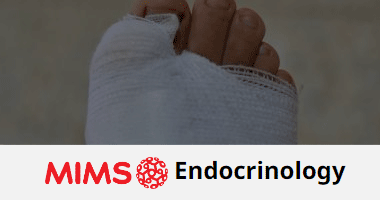
Audrey Abella

Indre Jasineviciute, Juozas Grigas, Gintare Ziukaite, Arnoldas Pautienius, Dainius Razukevicius, Judita Zymantiene & Arunas Stankevicius


Wed, Nov 2, 2022 · 2:30 PM Eastern Time (US & Canada) (GMT -4:00)

ADVANCED WOUND CARE SUMMIT
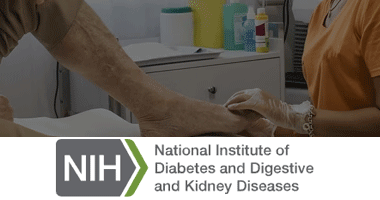

Muñoz, Victoria; Pino, Ander; Martinez, Carmen; Echevarria, Begoña; Lacramioara, Varlan; Anitua, Eduardo


Neil Baker OBE

Jennifer Spector, DPM, FACFAS, Assistant Editorial Director

A Case Study Pérez-Acevedo, Gemma; Bosch-Alcaraz, Alejandro; Torra-Bou, Joan Enric

Jennifer Spector, DPM, FACFAS, Assistant Editorial Director




Sylvie Hampton

A Multiple Case Series

Dr. Abigail Chaffin
surpassing 2,000 peer-reviewed medical journal studies published
ST. PAUL, Minn., Oct. 13, 2022 /PRNewswire/ — 3M Health Care’s Medical Solutions Division today announced its 3M™ V.A.C.® Therapy negative pressure wound therapy (NPWT) has surpassed a clinical evidence milestone of 2,000 published, peer-reviewed medical journal studies. V.A.C. Therapy is the first and only NPWT solution to garner this number of published studies about its therapy. It is backed by more clinical data than any other brand, accounting for more than 75% of published NPWT clinical evidence.

3M™ V.A.C.® Therapy negative pressure wound therapy (NPWT) has surpassed a clinical evidence milestone of 2,000 published, peer-reviewed medical journal studies. It is backed by more clinical data than any other brand, accounting for more than 75% of published NPWT clinical evidence.
The clinical studies have been conducted by wound care professionals worldwide and published in journals across the globe, covering a comprehensive range of wound types, wound care settings and study formats, such as case studies, economic studies, randomized controlled trials and more.
“Clinical evidence has always been a foundational element to establishing credibility for V.A.C. Therapy and our NPWT products in the wound care community,” said Ronald Silverman, M.D., 3M Health Care senior vice president of clinical affairs and chief medical officer. “Published studies have also helped to promote adoption of NPWT and spur therapy innovations, including 3M™ Prevena™ Therapy for incision management, 3M™ Veraflo™ Therapy for instillation therapy for open wounds, 3M™ AbThera™ Open Abdomen Negative Pressure Therapy. Our team members in the field are also actively engaged with wound care experts worldwide, working right alongside clinicians to observe the changing nature of wound care and gather feedback about our products, which helps us identify opportunities for innovation.”
Today, V.A.C. Therapy is used across a spectrum of health care settings, from acute care facilities to ambulatory surgical centers, assisted living facilities, and in patients’ homes. In the U.S., V.A.C. Therapy is available with 24/7 remote therapy monitoring to support adherence to the therapy. 3M’s NPWT portfolio continuously evolves to meet clinician and patient needs. Last year, 3M launched the first-ever silicone-acrylic hybrid drape for use with V.A.C. Therapy, the 3M™ Dermatac™ Drape, an innovation designed to be gentle on patients’ skin and easy for clinicians to use.
“Today’s wound care patients are often sicker and have more comorbidities, making their wounds more complex to treat and increasing the demands on clinicians’ time. 3M strives to provide a robust tool selection to address clinicians’ unique wound care needs and make our products easier to use to help save their valuable time — and ultimately, help transform outcomes and improve lives for wound care patients,” said Dr. Silverman.
For more information, visit www.3m.com/npwt.
About 3M
3M (NYSE: MMM) believes science helps create a brighter world for everyone. By unlocking the power of people, ideas and science to reimagine what’s possible, our global team uniquely addresses the opportunities and challenges of our customers, communities, and planet. Learn how we’re working to improve lives and make what’s next at 3M.com/news or on Twitter at @3M or @3MNews.
Photo – https://mma.prnewswire.com/media/1919999/3M_VAC_Therapy.jpg
Logo – https://mma.prnewswire.com/media/1343410/3M_Logo.jpg
SOURCE 3M
This article was originally published here


Michael King, Chief Medical Officer, Upperline Health
Studies of Wound Closure Rate with Novel Chronic Wound Treatment Continue
SARASOTA, Fla., Oct. 13, 2022 /PRNewswire/ — Omeza today announced that the Centers for Medicare and Medicaid Services (CMS) has confirmed a HCPCS reimbursement code for Omeza® Collagen Matrix; code A2014, “Omeza collagen matrix, per 100 mg” was established to describe the product.

Omeza® Collagen Matrix is the first of its kind drug-device combination product, with a simple snap and squeeze application for chronic wounds.
Omeza® Collagen Matrix is the first of its kind drug-device combination product, with a simple snap and squeeze application for chronic wounds. The FDA-cleared drug-device received a Level II Healthcare Common Procedure Coding System (HCPCS) reimbursement code paving the way for providers to receive reimbursement from Medicare.
The decision came after application was made to CMS in late 2021. Omeza Chief Commercial Santino Costanza stated, “This decision by CMS opens the doors to Omeza’s innovative treatment line for millions of Americans covered by Medicare who are currently suffering from chronic wounds. Now we look forward to educating commercial payors on the health, financial and humanitarian benefits of a positive reimbursement decision.”
Earlier this year the Department of Veterans Affairs Federal Supply Schedule (FSS) Service granted contract status for Omeza® Collagen Matrix. All Omeza products are available to government agencies through Marathon Medical, a prime vendor for the VA.
Currently, three US clinical trials are investigating the use of the three-product Omeza treatment product line, which includes Omeza® Collagen Matrix, for documentation of healing rates in venous ulcers, diabetic ulcers, and other chronic wounds. Concurrently, individual case studies submitted by providers testing the Omeza treatment product line on chronic wound closure in their clinical settings report an average percentage area reduction (PAR) of 60% at 4 weeks.
Omeza ® Collagen Matrix is indicated for the management of wounds including partial and full-thickness wounds, pressure ulcers, venous ulcers, diabetic ulcers, chronic vascular ulcers, tunneled/undermined wounds, surgical wounds (donor sites/grafts, post-Moh’s surgery, post-laser surgery, podiatric, wound dehiscence), trauma wounds (abrasions, lacerations, superficial partial thickness burns, skin tears) and draining wounds.
Omeza ® Collagen Matrix is the first drug/device combination product to deliver an anhydrous 3- dimensional microstructure of collagen to challenging wounds. When applied to a wound surface, the snap and squeeze matrix is naturally incorporated into the wound over time. Omeza® Collagen Matrix is designed for intimate contact with both regular and irregular wound beds, to provide a conducive environment for the patient’s natural wound healing process.
About Omeza:
Omeza (www.omeza.com) is a skin science company pursuing equitable access to better wound care outcomes for patients at all sites of care. The company is based in Sarasota, FL USA. Inquiries from medical and health professionals should be directed to info@omezapro.com.
SOURCE Omeza LLC
This article was originally published here




aimed at regulated health professionals in Ontario

Nancy Collins, PhD, RDN, LD, NWCC, FAND Giovanna Rosario Arroyo, MA, RDN, CD, LDN
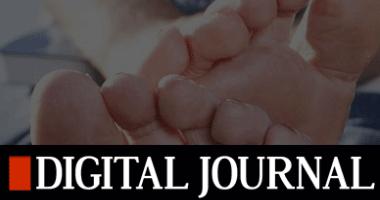



2022 Fall Symposium on Advanced Wound Care (SAWC)

NEWS PROVIDED BY
American College of Wound Healing and Tissue Repair
Oct 11, 2022, 09:00 ET
American Society of Plastic Surgeons and American College of Wound Healing and Tissue Repair to Discuss Fellowship Training to Improve Patient Outcomes
BOSTON, Oct. 11, 2022 /PRNewswire/ — The American Society of Plastic Surgery (ASPS) and the American College of Wound Healing and Tissue Repair (ACWHTR) will hold a joint strategic planning meeting on Oct. 27 in Boston to discuss advanced fellowship training in wound healing and tissue repair.
Since 2011, ACWHTR has trained fellows in wound healing and tissue repair at the University of Illinois at Chicago and helped create similar university-based programs that focus on training non-surgeons in the field of wound healing.
“With more than 6.2 million people in the United States living with non-healing wounds – magnified by an aging society as well as epidemics of obesity and diabetes, the number of patients with these conditions continues to grow,” says ASPS President J. Peter Rubin, MD, MBA. “Over the past year, ASPS and ACWHTR have engaged in dialogue about establishing new training paradigms for this much-needed and constantly evolving clinical field.”
Non-surgical providers lead many wound care centers; however, surgeons who provide the needed surgical procedures are also increasingly taking on leadership roles as medical directors, in-patient service chiefs, and leaders in the field.
This strategic planning session is open to all interested providers, medical and surgical professional society representatives, and those currently directing surgical, non-surgical or hybrid training programs. The goal of the meeting is to improve patient outcomes across many settings by establishing a formal, consistent educational curriculum. ASPS has led the process and proposes a non-ACGME match program for plastic surgery residents to build on the trainee’s foundational knowledge in skin and wound care procedures.
“A further objective of the collaboration is to increase the number of non-surgical fellowships based on the current ACWHTR educational platform,” says president and founder of ACWHTR, William J. Ennis. DO, MBA.
The strategic planning and ASPS/ACWHTR Wound Care Fellowship launch meeting will take place at 1:15 p.m. EDT at the Boston Convention & Exhibition Center on Oct. 27, during Plastic Surgery The Meeting in Boston. The option to participate virtually is available. Kindly respond to ASPS Senior Vice President Gina T. McClure at gmcclure@plasticsurgery.org for additional information or to register for the virtual event.
About American College of Wound Healing and Tissue Repair
The American College of Wound Healing and Tissue Repair (ACWH) is a 501(c)(3) nonprofit organization based in Chicago that is committed to advancing the field of wound care through education, research, and advocacy. The College fosters the training of medical professionals through the sharing of a physician-based, clinical fellowship curriculum developed in conjunction with the University of Illinois Hospital and Health Sciences System and allied healthcare colleges and programs. The goal of the organization is to designate wound care as a board-certified medical specialty.
About the American Society of Plastic Surgeons
The American Society of Plastic Surgeons (ASPS) is the largest organization of board-certified plastic surgeons in the world. Representing more than 7,000 physician members, the society is recognized as a leading authority and information source on cosmetic and reconstructive plastic surgery. ASPS comprises more than 93 percent of all board-certified plastic surgeons in the United States. Founded in 1931, the society represents physicians certified by The American Board of Plastic Surgery or The Royal College of Physicians and Surgeons of Canada.
SOURCE American College of Wound Healing and Tissue Repair
This article was originally published here
FREDERICK, MD. (PRWEB) OCTOBER 11, 2022
Nearly 6 million people in the U.S. suffer with chronic wounds. That care translates to more than $96.8 billion in annual Medicare costs. Nanobiofab, a nanotechnology startup founded by Dr. Xiaonao Liu, is working to make detection and care of such wounds quicker and more efficient by utilizing their proprietary real-time agnostic patch for infection detection, an intelligent nose known as RAPID-iNose.
The company is a member of the Frederick Innovative Technology Center, Inc. and was recently awarded a $250,000 Defense Health Agency SBIR Program contract for their proposal, “RAPID-iNose: Real-time Agnostic Patch for Infection Detection using Intelligent Nose.” The project combines a patented, wireless and highly-sensitive nanosensor array with artificial intelligence algorithms. In tests to date, the RAPID-iNose automatically and continuously captures information on the types and amounts of pathogens. Results can then prompt infection alerts to patients and doctors, eliminating some of the biggest challenges in wound care.
Dr. Liu explains, “Currently, clinical judgment is required for diagnosis and treatment. However, symptoms of wound infection are commonly masked in patients with complex wounds.”
Considered the current “gold standard,” culture-based antimicrobial susceptibility testing is now conducted under aseptic conditions in laboratories. This requires assessment by specialists using reagents, which may not be logistically feasible, especially in a battlefield environment. Turnaround is also slow, taking anywhere from hours to days for processing, depending upon transportation of the sample. Caregivers lack the means for continuous sampling to monitor patient progress. And there is no Food and Drug Administration approved, telemedicine-capable, deployable device for early detection of wound infections or real-time monitoring in either field environments or hospital settings.
Nanobiofab’s previous work with the Small Business Innovation Research Program includes efforts to improve medical training through AI-enhanced clinical simulators with West Virginia University’s Center for Simulation Training and Education for Patient Safety. Kathie Callahan Brady, Nanobiofab advisor and FITCI CEO, says, “This company creates revolutionary million-scale nanomaterial that can be used in wide-ranging applications, from routine health monitoring to cancer detection, and everyone is an opportunity to improve the lives and reduce suffering.”
RAPID-iNose will be the world’s first wearable intelligent device for real-time monitoring of wound infection, replacing current resource-intensive detection methods. The device has the potential to help clinicians identify pathogens quickly, safely and easily, allowing for effective use of antimicrobials as well as reducing treatment costs substantially.
For more information on Nanobiofab or their nanosensor research, log on to http://www.nanobiofab.com.
This material is based upon work funded by the Defense Health Agency Small Business Innovation Research /Small Business Technology Transfer Programs under US Army Medical Research Acquisition Activity.
Any opinions, findings and conclusions or recommendations expressed in this material are those of the author(s) and do not necessarily reflect the views of the Department of Defense, DHA SBIR/STTR Programs or USAMRAA.
This article was originally published here


Technique in the Closure of Open Fracture Wound and Infected Wound With Significant Skin Loss

Alisha Oropallo, MD, FACS, FSVS, FAPWCA, FABWMS









and Ostomy® announces partnership to award wound care scholarships in Barbados




Dressing Demonstrates Bioabsorption and Biocompatability in Internal Bleeding


Readers who regularly frequent these pages are probably familiar with the topic of wound care.

One of the common causes of amputation of lower extremities


Tuesday October 11th, 12:00PM – 1:00PM EDT

BY PAUL KESSELMAN, DPM

By Dr. Lenz and Dr. Hussain

Amelia Beatty, DNP, MSN, NP, RN, CWCN-AP Penny S. Jones, AGNP-C, MN, CWS, CWCN-AP, COCN Christopher Vail, PA-C, MMCi Julie A. Thompson, PhD Staci S. Reynolds, PhD, RN, ACNS-BC, CCRN, CNRN, SCRN, CPHQ

Terry Treadwell


A Clinical Experience in Two Patients Nima Khavanin and Hooman T. Soltanian



Christine Miller, DPM, PhD

Laura Swoboda, DNP, APRN, FNP-C, FNP-BC, CWOCN-AP

by Caroline Fife, M.D.



Lower Extremity Wounds in Patients With Diabetes: A Case Series

Therapy System after Evaluation Yields Positive Results




Thursday, September 29, 2022 | 1:00 – 2:00pm ET

September 29 – October 1


from Jul 16, 2022

Nancy Collins, PhD, RDN, LD, NWCC, FAND

In this video, David Armstrong, PhD, DPM, discusses how DHACM treatment led to reductions in amputations, hospital readmissions, and cost for patient with diabetic ulcers.
Contract Awarded for Products that Bring Improvement to the Health Care Industry
PITTSBURGH, Sept. 29, 2022 /PRNewswire/ – MolecuLight Corp., the leader in point-of-care fluorescence imaging for the real-time detection of bacteria in wounds, announces it has been awarded a new group purchasing agreement with AllSpire Health GPO, a Mid-Atlantic GPO and a partner of HealthTrust Purchasing Group, engaged with over fifty hospitals in Maryland, New Jersey and Pennsylvania. AllSpire helps health systems optimize their operations by aggregating purchasing volumes, expenses, streamlining supplier negotiations and implementing efficiencies across the supply chain. The MolecuLight i:X® and DX™ wound imaging devices, which will now be available to AllSpire’s members, are helping clinicians to improve the state of wound care and ultimately to improve outcomes.

MolecuLightDX point-of-care imaging system for detection of elevated bacterial loads in wounds and for performing digital wound measurement and tracking (CNW Group/MolecuLight)
The MolecuLight imaging devices are the only FDA-approved devices that allow clinicians to visualize the presence, location, and load of bacteria (>104 CFU/g) in wounds in real-time. Published results from a recent 350-patient, 14-site clinical trial showed that the clinical standard of care alone detected 15% of wounds with elevated bacterial burden, while the addition of the MolecuLight device led to a 400% improvement in detecting these wounds2. The presence of elevated bacterial loads is known to impede wound healing1 and removal of bioburden is critical to improved wound outcomes1. The i:X and DX provide invaluable bacterial information at the point-of-care to inform clinical decision-making and enable targeted wound therapies. In a 2022 randomized controlled trial (RCT) 3, the highest level of evidence-based research, the improvement in healing rate at 12 weeks doubled in the patients that had care informed by MolecuLight fluorescence imaging compared to those that were not. Improvements in the patients’ quality of life were also reported. Another recent study reporting increased wound healing rates with the incorporation of bacterial information from MolecuLight imaging also found substantially decreased use of antimicrobial dressings and systemic antibiotics4. The MolecuLight devices also perform accurate digital wound measurement, allowing for the consistent monitoring and documentation of wounds.
“We are thrilled to have entered into a supply contract with AllSpire Health GPO,” says Anil Amlani, MolecuLight’s CEO. “Through the i:X and DX, we hope to enable significant cost-savings and improvements in clinical outcomes. AllSpire’s extensive member base can now easily access the MolecuLight wound imaging devices and see the clinical benefits in their wound care practices.”
“We are most impressed with the clinical utility that the MolecuLight i:X and DX devices provide to wound care professionals and are pleased to offer the MolecuLight portfolio via our Group Purchasing Agreement to our member hospitals”, says James Wallick, Senior Director, Strategic Sourcing at AllSpire Health GPO. “AllSpire is dedicated to sourcing the most innovative products that help to improve clinical decision-making and cost-efficiencies. We believe that the MolecuLight devices are highly innovative and will help to provide such clinical and operational benefits”.
In addition to the clinical benefits, MolecuLight procedures performed in the United States can benefit from an available reimbursement pathway including two CPT® codes for physician work to perform “fluorescence imaging for bacterial presence, location, and load” procedures and facility payment for Hospital Outpatient Department (HOPD) and Ambulatory Surgical Center (ASC) settings through an Ambulatory Payment Classification (APC) assignment.
About MolecuLight Corp.
MolecuLight Corp. is the US subsidiary of MolecuLight Inc., a privately-owned medical imaging company that has developed and is commercializing its proprietary fluorescent imaging platform technology in multiple clinical markets. MolecuLight’s suite of commercially released devices, including the MolecuLight i:X® and DX™ fluorescence imaging systems and their accessories, provide point-of-care handheld imaging devices for the global wound care market for the real-time detection of wounds containing elevated bacterial burden (when used with clinical signs and symptoms) and for digital wound measurement. The company is also commercializing its unique fluorescence imaging platform technology for other markets with globally relevant unmet needs including food safety, consumer cosmetics and other key industrial markets.
About AllSpire Health GPO
Founded in 2016, AllSpire Health GPO, LLC is a collaborative, regional group purchasing organization utilizing innovation analytics, as well as product and purchased service standardization, as a platform to escalate the improvement of clinical outcomes, enable greater access to affordable healthcare, ensure economic sustainability, and enhance patient, physician, and clinician satisfaction among its members. AllSpire Health GPO delivers value via the development and execution of clinical and service line improvement initiatives across the care continuum.
SOURCE MolecuLight



of chronic diabetic foot ulcers at the world’s premier diabetic foot conference (DFCon) in Los Angeles



Robyn Rayner, Keryln Carville, Joanna Smith and Cate Maguire

Jonathan Quinn, William Fairbairn, Gayle Silveira and Simon Platt


ALLOGRAFT APPLICATION IN ADVANCED VENOUS LEG UCLERS







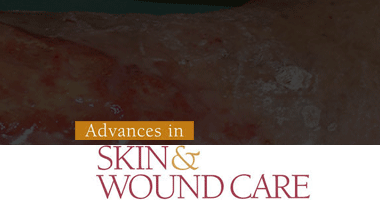

Physician Fee Schedule: Changes Could Increase Amputations and Infection for Patients with Wounds, Restrict Access to Care, Impact Reimbursement



Jun Ho Park & Ji-Ung Park




Bacterial biofilms pose a therapeutic challenge to managing chronic wounds and contribute to antimicrobial resistance. Here, Powell et al. investigated the structure/activity relationships of epoxy-tigliane compounds derived from the blushwood tree with respect to their role in wound healing.

The biofilm community has historically been very successful in aggregating scientists from very diverse fields. Now, we must harness innovative technologies across disciplines to illuminate the biofilm microenvironment and create in vitro models that accurately recapitulate natural environments.

Standardized methodology demonstrates high presence of placental membrane growth factors in BioStem’sVendaje® and Vendaje AC®tissue allografts

Skeleton buried in Borneo cave suggests early artists were also early surgeons

CellResearch Corporation, a Singapore-based biopharmaceutical company today announced it has successfully closed the first Phase I study in CorLiCyte®, a stem cell therapy derived from umbilical cord lining stem cells, with research partners at the University of Colorado, Anschutz Medical Campus and ClinImmune Cell and Gene Therapy.


by Bari Weiss
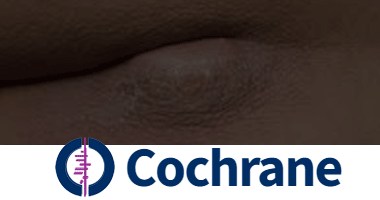
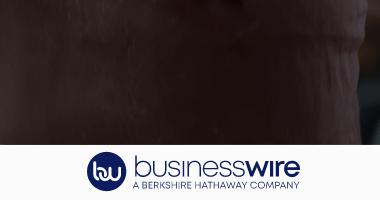
Advocacy on Behalf of Members and Collaboration with Government Agencies
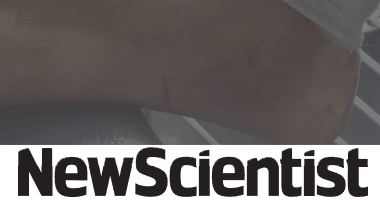



Guoxin Tan, Lijie Wang, Weisan Pan, Kai Chen

as First Aid Kits are Restocked During National Preparedness Month

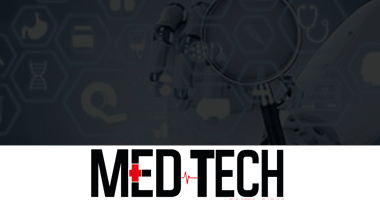
CANTON, Mass., Sept. 07, 2022 (GLOBE NEWSWIRE) — Organogenesis Holdings Inc. (Nasdaq: ORGO), a leading regenerative medicine company focused on the development, manufacture, and commercialization of product solutions for the Advanced Wound Care and Surgical and Sports Medicine markets, today announced that company management will participate in the Morgan Stanley 20th Annual Global Healthcare Conference, which is being held at the Sheraton New York Times Square Hotel in New York, NY from September 12th-14th. Management will host a fireside chat on Tuesday, September 13th at 11:45 a.m. Eastern Time.
A live audio webcast of the conference presentation will be accessible by visiting the “Upcoming Events” section on the “Investor Relations” page of Organogenesis’s website www.organogenesis.com. An archive of the webcast will be available for replay following the conference for approximately 30 days.
About Organogenesis Holdings Inc.
Organogenesis Holdings Inc. is a leading regenerative medicine company offering a portfolio of bioactive and acellular biomaterials products in advanced wound care and surgical biologics, including orthopedics. Organogenesis’s comprehensive portfolio is designed to treat a variety of patients with repair and regenerative needs. For more information, visit www.organogenesis.com.

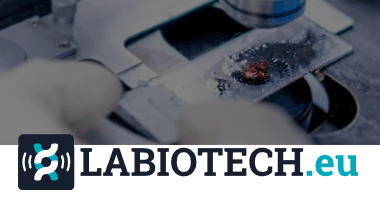



Lihong Chen, Yunyi Gao, Yan Li, Chun Wang, Dawei Chen, Yun Gao, Xingwu Ran
The regenerative biotechnology is reducing healing times to as little as three weeks in Mohs-related surgical wounds
PHOENIX–(BUSINESS WIRE)–Dermistat™, one of the latest wound healing innovations by BioLab Sciences, a regenerative biotechnology company, has emerged as the go-to wound healing option for dermatologists throughout the country. Introduced earlier this year, Dermistat™ is a revolutionary regenerative therapy that is transforming the wound care industry by decreasing healing time significantly compared to the standard of care secondary closure.
 Part of the MyOwn Skin™ suite of products, Dermistat™ uses a small sample of the patient’s healthy skin to create a gel-like substance that can create an autologous skin graft in as little as 48 hours. Used for acute surgical wounds, including Mohs procedures unable to be closed with standard plastic surgery techniques, and non-healing wounds, Dermistat™ is non-invasive, improves recovery time, is relatively painless, and creates only a small, superficial donor site wound.
Part of the MyOwn Skin™ suite of products, Dermistat™ uses a small sample of the patient’s healthy skin to create a gel-like substance that can create an autologous skin graft in as little as 48 hours. Used for acute surgical wounds, including Mohs procedures unable to be closed with standard plastic surgery techniques, and non-healing wounds, Dermistat™ is non-invasive, improves recovery time, is relatively painless, and creates only a small, superficial donor site wound.
“Dermistat™ was originally developed to treat severe burns, trauma and plastic procedures, however, BioLab Sciences modified the process enabling it to be effectively leveraged in the dermatologist’s office, allowing patients to recover faster and more completely,” said Jaime Leija, Chief Commercialization Officer at BioLab Sciences. “Dermistat™ is proving to be a valuable resource for Mohs patients as it eliminates the need to perform a graft to cover larger wounds and it significantly reduces the healing time.”
This novel biotechnology is based on the MyOwn Skin™ technology, which leverages a very small sample of a patient’s own skin through a non-surgical procedure to reproduce the gel-like substance within 48 hours. In many cases, Dermistat™ accelerates the healing of post-surgical and chronic wounds and because of its favorable outcomes, it is on track to disrupt the wound care industry.
“We have been using Dermistat™ on surgical defects post-Mohs surgery after excising skin cancer,” said Travis Gilbert, PA-C with Desert Dermatology & Skin Cancer Specialists. “The wounds were typically open for 5-7 days prior to applying Dermistat™. Prior to using Dermistat™, we would close with flaps mostly. Occasionally, we would use skin grafts. Today we are using mostly Dermistat™ to cover these acute surgical wounds. They are healing much more rapidly than secondary closure and do not require significant plastics closure.”
About BioLab Sciences
BioLab Sciences is a regenerative medicine company focused on creating new ways to heal the body. The company is uncovering better ways to address orthopedic injuries, wound care, pain management, aesthetic medicine, respiratory ailments, cardiovascular indications, ophthalmic issues, and more. Learn more at www.biolabsciences.net/.
Contacts
Beth Cochran, Wired PR
beth@wiredprgroup.com
(602) 758-0750

Pragateshnu Das, Debmalya Bhattacharya, Rajlaxmi Sathpathy

Mary R. Brennan MBA, RN, CWON

By Heidi Cross, MSN, RN, FNP-BC, CWON

Alton R. Johnson, Jr., DPM, FACPM, CWSP

Mandalyn Mills Luke Counterman Shanna Williams

Sara Yumeen Mélissa Roy Fatima N. Mirza Sarah Rehou Shahriar Shahrokhi


Asad Ullah, Syed I. Jawaid, Pir Naveed Ahmed Ahsan Qureshi, Tehreem Siddiqui, Khadija Nasim, Kantash Kumar, Shafqat Ullah, Mustafa Sajjad Cheema, Nikita Kumari, Hafiza Azad Elias
BEVERLY HILLS, Calif., Aug. 23, 2022 (GLOBE NEWSWIRE) — Miracle Dressing Wound Care System 21-Day Stay-in-Place Dressing has been named Wound Care Product of the Week by WoundSource, “the world’s definitive source for wound care and product information.”
Miracle Dressing™ Wound Care System is the only 21-day stay-in-place dressing. Wound prevention, monitoring, cleaning and topical applications can all be completed without dressing removal. This saves nursing time and reduces patient distress from frequent dressing changes.
The system includes Natural Marine Extract™, the ingredients of which are known to promote faster healing of the skin and better wound healing results.
The Wound Healing Society spotlighted the importance of dressings that can stay in place for an extended time, especially due to extended stays caused by COVID mitigation. They recommend utilizing dressings that decrease the intensity of wound care by avoiding the use of dressings that must be changed daily. This would allow over-stressed health care staff to reach more patients in an adequate time frame.
The Miracle Dressing System can be used for:
MBET is recognized for their skin revitalization and wound care products as well as kelp reforestation and other international environmental projects.
MBET Health is a solutions-oriented technology company focused on solving one of the most important and intransient problems facing the world of medicine: preventing and healing wounds.
MBET Health was founded by Dr. Eric Lewis, a practicing dermatologist, surgeon and scientific researcher based in Beverly Hills, CA. The MBET Health management team includes medical and surgical doctors from a multitude of disciplines, pharmacists and marine biologists.
Beginning in 2001, their founders researched a multitude of marine compounds reported to have human health benefits. As a result of their extensive studies and tests, several compounds and systems specifically designed for rejuvenation and effective repair of damaged skin have been patented (or patent-pending). The mechanisms of action of their system’s ingredients are designed to heal intractable wounds and strengthen weak, vulnerable skin to minimize the probability of breakdown.
The MBET Health website provides a destination for all wound care providers, nursing staff and senior management to see for themselves the convincing before and after photos and to learn details about proper product application and dressing maintenance.
Contact
Linda Sherman Gordon
MBET Health Chief Marketing Officer
310-243-6305
Email contact
MBET Health LinkedIn
Before / After press photos available upon request
This article was originally published here

Neal M. Lonky, MD, MPH, Jeffrey Lehrman, DPM, FASPS, MAPWCA, CPC, Andrew Schneider
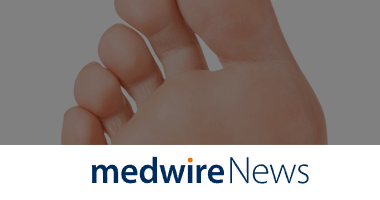



via Regulating Angiogenesis, Inflammatory Response and Skin Flora



Briana Fernandez, Sidra Deen, Carly Dunn, Tara L. Braun




Holly D. Sparks, Serena Mandla, Katrina Vizely, Nicole Rosin, Milica Radisic & Jeff Biernaskie


Patrícia Rosinha, Miguel Saraiva, Lia Ferreira, Susana Garrido, André Carvalho, Cláudia Freitas, Cláudia Amaral, Luís Costa, Luís Loureiro, Rui Carvalho




Shivani J. Patel, BS Khurram Khan, DPM, FACFAS, FACPM James McGuire, PT, DPM, CPed, FAPWHc

Posted by Tim Gilmer in Life After Paralysis on August 12, 2022

MANCHESTER CENTRAL, 22ND SEPTEMBER 2022
LARGO, Fla.–(BUSINESS WIRE)–BioDerm, Inc., a leading provider of disposable medical devices and wound care supplies, announced the addition of two executives to strengthen its leadership position in providing premium solutions for patients with chronic medical conditions. BioDerm President & CEO Gaet Tyranski said, “I’m ecstatic to add seasoned talent in the areas of sales and marketing and compliance to take us to the next level.”
 Colleen Kennedy is joining BioDerm as Vice President of D2C Sales and Marketing, bringing more than 20 years’ experience driving D2C marketing programs. Most recently, Colleen directed agency teams at Bluewater Media, working with a variety of D2C brands to maximize revenue opportunities. She specialized in multi-channel D2C programs that combined both traditional and emerging media channels to generate positive results through data driven analysis. Colleen has the unique ability to talk strategy in lay terms to guide teams in new and profitable directions, while building relationships based on trust and confidence. Prior to Bluewater Media, Colleen was the VP Account Director at D2C agency Acquirgy.
Colleen Kennedy is joining BioDerm as Vice President of D2C Sales and Marketing, bringing more than 20 years’ experience driving D2C marketing programs. Most recently, Colleen directed agency teams at Bluewater Media, working with a variety of D2C brands to maximize revenue opportunities. She specialized in multi-channel D2C programs that combined both traditional and emerging media channels to generate positive results through data driven analysis. Colleen has the unique ability to talk strategy in lay terms to guide teams in new and profitable directions, while building relationships based on trust and confidence. Prior to Bluewater Media, Colleen was the VP Account Director at D2C agency Acquirgy.
BioDerm promoted Alicia Lance to Sr. Director of Compliance for BioDerm and all affiliates. Alicia started at BioDerm in 2013, as a Manager of AMDI and most recently served as the Director of Customer Care and AMDI. She has built a strong customer care program at BioDerm based on integrity and dedication to patient outcomes. Alicia serves on the Medical Supply committee for AAHomecare and has over 20 years’ experience working in DME operations and compliance. She is excited to direct and expand BioDerm’s compliance program to enhance the company’s growth. Prior to BioDerm, Alicia worked at CCS Medical as a Compliance Manager. She holds a BS in Allied Health from the University of West Alabama.
About BioDerm
Headquartered in Largo, Florida, BioDerm is a leading provider of disposable medical devices and wound care supplies to patients with chronic conditions. BioDerm manufactures proprietary hydrocolloid products for urinary management, securement, infection control and skin protection, challenging accepted inferior standards of care by creating products that reduce infection rates, add comfort and reliability, and vastly improve quality of life. BioDerm’s flagship products for male urinary incontinence are Men’s Liberty for the home setting and Men’s Liberty Acute for in-patient settings. Other products include CathGrip for securement and BioPlus and FreeDerm for skin protection.
Wound Care Resources (“WCR”), a subsidiary of BioDerm, provides infection control products and other wound management supplies to patients with ventricular assist devices (VADs) installed due to heart failure, as well as other conditions.
For more information on BioDerm’s line of products visit www.bioderminc.com.
Contacts
Amy Stephens
Director of Marketing
727-416-2684
View source version on businesswire.com: https://www.businesswire.com/news/home/20220817005217/en/

From 6/25/2019
Medical groups say untreated chronic wounds are costing the Australian health systems $3 billion a year. Subscribe: http://ab.co/1svxLVE
Around Australia there are 420,000 people living with chronic wounds, with those living outside the big cities, poorer people and First nations people the worst affected.
Hayley Ryan, chair of advocacy group Wounds Australia, speaks with ABC News.


Natalie Vaughn

Periwound skin, found around a wound, is fragile and prone to injury

David D Zabel, MD, FACS
It is not clear what methods Dr Yusuf Maraşlı uses to reduce amputations, this might be worth a watch anyway:
Wound Healing Society for immersive educational experience
Premier annual limb salvage meeting co-locates with the leading meeting dedicated to the research, management, treatment, and prevention of wounds in April.
Three industry-leading wound care organizations are uniting for a conference in April 2023, focusing on wound prevention and management, research, and limb salvage. The meeting will offer the most cost-effective, comprehensive, and immersive educational event for professionals in the wound care space.
The Symposium on Advanced Wound Care (SAWC) Spring | Wound Healing Society (WHS) is the leading meeting dedicated to the research, management, treatment, and prevention of wounds; and Diabetic Limb Salvage (DLS) is the premier annual limb salvage education event focused on wound healing and preventing amputations. The 2023 event is organized by HMP Global, the omnichannel leader in healthcare events and education, and will be held April 26-30, 2023, in National Harbor, Maryland.
The in-person event will provide opportunities for networking and collaboration, with an educational agenda featuring an expert lineup of faculty, in-depth discussions, and exposure to innovation, proven techniques, and effective strategies for patient care. The interdisciplinary agenda is designed for every clinician interested in wound care, including physicians, nursing professionals, physical therapists, researchers, scientists, podiatrists, and dietitians — connecting the entire wound care team with the foremost experts in the field to improve patient outcomes through education.
DLS Co-Chairs are Dr. Christopher E. Attinger, Chief, Division of Wound Healing at MedStar Georgetown University Hospital and professor of plastic and orthopaedic surgery, Georgetown University School of Medicine in Washington, D.C.; and Dr. John S. Steinberg, Co-Director, MedStar Health Wound Healing Institute at MedStar Georgetown University Hospital, Hospital Center Director of the Podiatric Residency Training Program, MedStar Health, and a professor of plastic surgery at Georgetown University School of Medicine.
“Through this collaboration, educational opportunities at the conference will focus on every aspect of wound research, prevention, and healing along with a focus on limb salvage,” said Dr. Steinberg. “We are solving the issue of access to education by uniting these three events this year to provide learners with one comprehensive event. It is an opportunity for providers to strengthen their clinical skills, invigorate their approach, and positively impact their ability to care for their patients.”
The collaboration with DLS will add more limb salvage-focused topics to the conference agenda, including:
The WHS President is Dr. Kenneth Liechty, Division Chief of Pediatric Surgery and Director of Fetal Medicine, University of Arizona, and Surgeon in Chief of Diamond Children’s Hospital; and Co-Chairs are Dr. Daria Narmoneva, associate professor, University of Cincinnati, and Dr. Carlos Zgheib, assistant professor of surgery, University of Colorado Denver School of Medicine in Aurora.
“Although each of these three organizations have a unique mission, we are united in our goals of improving outcomes for patients and patient populations,” Dr. Liechty said. “We are excited to host one symposium for every member of the wound care team, allowing us to provide the highest caliber training and education that all clinicians can incorporate in their practice.”
SAWC Spring Co-Chairs are Dr. Robert S. Kirsner, Harvey Blank Professor and chairman, Dr. Philip Frost Department of Dermatology and Cutaneous Surgery, University of Miami Miller School of Medicine; and Dot Weir, RN, CWON, CWS, clinician at Saratoga Hospital Wound Healing.
“We have partnered with the Wound Healing Society for 15 years, providing a robust educational experience for meeting participants, and this year’s event will be even stronger with the addition of multiple topics on amputation prevention,” Dr. Kirsner said. “No other wound care conference offers the level of education, advanced state-of-the-art clinical reviews, and emerging research findings.”
For more information or to register, visit sawcspring.com.
ABOUT HMP GLOBAL
HMP Global is the force behind Healthcare Made Practical — and is an omnichannel leader in healthcare content, events, and education, with a mission to improve patient care. The company produces accredited medical education events — in person and online via its proprietary VRTX virtual platform — and clinically relevant, evidence-based content for the global healthcare community across a range of therapeutic areas. Its brands include the HMP Global Learning Network, healthcare’s most comprehensive source for news and information; Psych Congress, the largest independent mental health meeting in the U.S.; the Evolution of Psychotherapy, the world’s largest independent educational event for mental health professionals; the Leipzig Interventional Course (LINC), the leading, global gathering for interdisciplinary cardiovascular specialists; EMS World Expo, North America’s largest EMT and paramedic event; and the Symposium on Advanced Wound Care (SAWC), the largest wound care meeting in the world. For more information, visit hmpglobal.com.

Alex K. Wong MD, FACS,

Jason Anderson, DPM, FACFAS

Charles B Parks, DPM, FACFAS
This includes the analogous nature of articular cartilage, muscle fascia, and intervertebral disc confirmed by way of comparative Scanning Electron Microscope analysis
PENSACOLA, Fla., Aug. 15, 2022 /PRNewswire/ — Regenative Labs, a leading HCT/P manufacturer, has co-authored a pioneering paper together with experts from The Institute of Regenative Medicine and the Department of Pharmacology and Chemical Biology, Baylor College of Medicine.
“This paper is a market disruptor and will be our most significant paper released to date. This is the first literature that we are aware of to utilize Scanning Electron Microscope (SEM) images of actual tissue samples to objectively demonstrate on a qualitative and quantitative basis that collagen structural tissue matrices in our post-processed Wharton’s Jelly allografts and those in articular cartilage, muscle fascia, and intervertebral discs are analogous,” said Regenative Labs CEO, Tyler Barrett.
This research highlights our commitment to the Regenerative Medicine community. We believe the combination of our IRB-approved observational studies, peer-reviewed publications, ISO-certified laboratory processes, and our commitment to compliance with FDA and American Association of Tissue Banks (AATB) standards, sets the standard for HCT/P manufacturers. Regenative Labs has pioneered the use of perinatal tissue allografts and is pleased that this paper supports our current homologous use practices, consistent with our 361 status.
Currently, the treatments for the Intervertebral Disc (DDD) range in cost and effectiveness from an $8 bottle of Ibuprofen to $150,000 for spinal fusion (1). Neither of these treatment options target the foundational issue of ECM cartilage breakdown in the intervertebral discs. By age 35, 30% of people show signs of DDD; by age 60, this increases to 90% (2). That we are aware of, this is the first perinatal tissue allograft in the medical marketplace that may be applied in a homologous fashion per FDA 361 guidelines to replace or supplement missing or damaged connective tissue. All other non-surgical paradigms focus on symptom management and do not address the disc’s collagen structural degeneration. In collaboration with medical providers across the country, we are actively investigating additional homologous use applications for this technology in tissue defects associated with the load-bearing joints of the knee, hip, shoulder, spine, ankle, and foot.
Billions of dollars are spent annually on the surgical care and treatment of patients suffering from degeneration of load-bearing joints and intravertebral discs. We are honored to offer patients evidence-based and structural tissue defect-specific non-surgical applications on a global scale.
Additional Sources:
About Regenative Labs: Regenative Labs produces regenerative medicine products to address the root cause of a patient’s conditions using Wharton’s Jelly innovations rather than masking the pain with other treatments. Regenative Labs works closely with scientists, physicians, hospitals, and surgery centers to constantly monitor and improve patient progress and outcomes for new product development. Formed by veteran industry professionals familiar with daily challenges of innovations in healthcare, the company provides non-addictive, non-invasive options for patients. Regenative Labs’s expert product research and development team complies FDA guidelines of minimal manipulation for homologous use. The company adheres to AATB and FDA guidelines. Learn more at Regenative’s website: www.regenativelabs.com
SOURCE Regenative Labs

Aram Avila-Herrera, James B. Thissen, Nisha Mulakken, Seth A. Schobel, Michael D. Morrison, Xiner Zhou, Scott F. Grey, Felipe A. Lisboa, Desiree Unselt, Shalini Mabery, Meenu M. Upadhyay, Crystal J. Jaing, Eric A. Elster & Nicholas A. Be

Ana Paula C. Jalkh, Aziza K. Eastmond, Chaitra Shetty, Syed Muhammad Hannan Ali Rizvi, Joudi Sharaf, Kerry-Ann D. Williams, Maha Tariq, Maitri V. Acharekar, Sara Elena Guerrero Saldivia, Sumedha N. Unnikrishnan, Yeny Y. Chavarria, Adebisi O. Akindele, Pousette Hamid



If liquids make their way into the bandage, the gauze along its perimeter will turn a dark blue color to indicate a new bandage is needed.

A comprehensive atlas of microRNA and messenger RNA expression in healing and non-healing human wounds highlights possible new approaches for treating venous ulcers – a common type of chronic, non-healing wound.
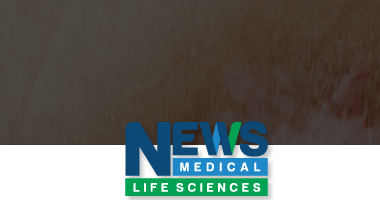

Simona Serini and Gabriella Calviello
New Financing to Meet Significant Growth in Global Demand for MolecuLight’s i:X® and DX™ Point-of-Care Imaging Devices for the Wound Care Industry
TORONTO, Aug. 11, 2022 /PRNewswire/ – MolecuLight Inc., the leader in point-of-care fluorescence imaging for real-time detection of wounds containing elevated bacterial loads, announced that it has completed a financing with BDC Capital and iGan Ventures. The funds are to support MolecuLight’s continued global expansion to meet growing customer demand for its MolecuLight i:X® and DX™ devices. Leonard Kofman and Jody Staggs, Managing Director of SWK Holdings will join MolecuLight’s Board of Directors as observers.

MolecuLight receives financing from iGan Partners and BDC Ventures (CNW Group/MolecuLight)
“With the continued growth in global demand for our i:X and DX platforms, we are happy to announce this financing from BDC Capital and iGan Ventures, who has been an early investor in MolecuLight,” says Anil Amlani, CEO of MolecuLight Inc. “The proceeds will support the continued growth of our commercial operations and infrastructure to meet market demand”.
“We have invested in MolecuLight since inception and are thrilled to see the company achieve global commercial success,” says Sam Ifergan, Founder and President of iGan Partners. “Their customers continue to generate a wealth of published data showing the improved outcomes and cost savings, which is supporting MolecuLight becoming the standard-of-care in wound care globally”.
“BDC is proud to participate in the financing of MolecuLight, an impressive Canadian company that is making a global impact in terms of improving healthcare outcomes,” says Leonard Kofman, Partner with BDC Capital’s Intellectual Property-Backed Financing practice. “MolecuLight solved an unmet clinical need – the need to detect bacterial burden in wounds, and has commercialized a suite of products that is positively impacting wound care globally. Demand for the technology is strong and growing and we believe the company is well positioned for continued growth and success”.
The MolecuLight devices are sold in North America through its direct sales and clinical applications team and internationally through MolecuLight’s 15 specialized distributors in 18 countries.
About MolecuLight Inc.
MolecuLight Inc. is a privately-owned medical imaging company that has developed and is commercializing its proprietary fluorescent imaging platform technology in multiple clinical markets. MolecuLight’s suite of commercial devices, which include the MolecuLight i:X® and DX™ fluorescence imaging systems and their accessories, are point-of-care handheld imaging devices for the real-time detection and localization of bacterial load in wounds and digital wound measurement. MolecuLight procedures performed in the United States benefit from an available reimbursement pathway which include two CPT® codes for physician work to perform “fluorescence imaging for bacterial presence, location, and load” and facility payment for Hospital Outpatient Department (HOPD) and Ambulatory Surgical Center (ASC) settings through an Ambulatory Payment Classification (APC) assignment. The company is also commercializing its unique fluorescence imaging platform technology for other global markets with relevant unmet needs in food safety, consumer cosmetics and other key industrial markets.
Tungsten Advisors served as the exclusive financial advisor to MolecuLight Inc.
About BDC Capital
BDC Capital is the investment arm of BDC, Canada’s bank for entrepreneurs. With over $3 billion under management, BDC Capital serves as a strategic partner to the country’s most innovative firms. It offers a full spectrum of capital, from seed investments to transition capital, supporting Canadian entrepreneurs who wish to scale their businesses into global champions. Visit bdc.ca/capital.
About iGan Partners:
Based in Toronto, iGan Partners is Canada’s leading health technology investors focused on disrupting the sector through breakthrough innovation that dramatically improve patent are while reducing costs. The firm focuses on identifying at an early-stage, then commercializing and scaling technological advancements in AI/Cloud-enhanced medical devices and digital health. iGan provides portfolio companies with smart-capital, active support, and access to a network of industry partners and sector-specific co-investors to help them grow and succeed.
About Tungsten Advisors:
Tungsten Advisors (www.tungstenadv.com) is an investment banking firm focused on strategic advisory and corporate finance for healthcare and technology companies. Tungsten provides transactional services including financings (private placements/PIPEs), corporate licensing and mergers and acquisitions (M&A). Tungsten also focuses on company incubation and makes direct investments alongside the creation of new companies in healthcare and technology.
Securities offered through Finalis Securities LLC Member FINRA/SIPC. Tungsten Partners LLC d/b/a Tungsten Advisors and Finalis Securities LLC are separate, unaffiliated entities.
SOURCE MolecuLight

A Preliminary, Retrospective Comparative Study Kaissar Yammine, Sandra Akiki, Chahine Assi, Fady Hayek

Catherine T. Milne, MSN, APRN, CWOCN-AP Amanda Estapa, ACNP-BC, CSW, FACCWS

Harry Schneider, DPM, FACFAS

Diane L. Krasner, PhD, RN, FAAN, FAAWC, MAPWCA
Future applications for the early, preventative use of amniotic membrane allografts in addition to the current standard of care for DFUs present a novel opportunity to reduce long-term morbidity and amputation risk in diabetic patients.
PENSACOLA, Fla., Aug. 8, 2022 /PRNewswire/ — A new MDPI study, co-authored by Regenative Labs signifies a huge win for patients suffering from diabetic foot ulcers (DFUs). DFUs are debilitating for an individual. They are painful, long lasting, and, even with proper care, can lead to amputation. The current standard of care for DFUs is debridement, the medical removal of dead, damaged, or infected tissue to improve the healing potential of the remaining healthy tissue. The increased healing time and augmented risk of amputation associated with the current standard of care only solidifies the need for new DFU treatment alternatives. Regenerative medicine is such an alternative.
With approximately 37.3 million diabetic adults in the United States, physicians are faced with an epidemic. Given the projected increase of 1.4 million new diagnoses of diabetes mellitus each year, advancing knowledge and care for the disease and its related conditions is especially relevant.
Regenative Labs’ AmnioText™, a dehydrated amniotic membrane allograft, was used to close a grade 5 wound according to the Curative Health Services (CHS wound grade scale), described as full thickness and subcutaneous tissues, exposed tendons, ligaments, and/or joints, plus necrotic tissue in the wound, in 7 weeks. Grade 5 wounds have a 91.5% rate of not healing at all. This unsettling outcome emphasizes the efficacy and importance of amniotic membrane allografts in revolutionizing the standard of care for DFUs.
The inability to heal DFUs presents a severe danger to patients as anywhere from 5 to 24% of untreated DFUs can lead to limb amputation within 6–18 months. These infections can lead to long-term impairment and possible lower-limb amputation without timely and correct management.
“Regenative Labs and our products are focused on ameliorating this problem with our outcomes-based approach. We provide the highest quality amniotic membrane allograft to allow doctors to provide predictable outcomes for their patients,” shared Regenative Labs CEO, Tyler Barrett.
Amniotic membrane allografts, such as those provided by Regenative Labs, have proven to augment the body’s ability to regenerate the structural tissue defects associated with DFUs; they are also comparable in cost to the standard of care, which averages about USD 17,245. Not only is the current standard of care for DFUs less effective, but it is also high in cost and typically relies on inpatient expenditures.
Medicare now recognizes the medical necessity of amniotic membrane allografts in the treatment of both DFUs and venous stasis ulcers. Consequently, many patients rely on Medicare to assist with the costs associated with DFU treatment. This presents the opportunity for human amniotic membrane allografts to be utilized in rural and underserved communities where DFU treatment is typically delayed due to high costs and a lack of supplies associated with traditional treatment. This could exponentially decrease the risk of amputations in diabetic patients in these rural and underserved communities.
About Regenative Labs: Regenative Labs produces regenerative medicine products to address the root cause of a patient’s conditions using Wharton’s Jelly innovations rather than masking the pain with other treatments. Regenative Labs works closely with scientists, physicians, hospitals, and surgery centers to constantly monitor and improve patient progress and outcomes for new product development. Formed by veteran industry professionals familiar with daily challenges of innovations in healthcare, the company provides effective, non-addictive, non-invasive options for patients. Regenative Labs has a laser-focused, expert product research and development team which follows FDA guidelines of minimal manipulation for homologous use. The company adheres to AATB and FDA guidelines.
Learn more at Regenative’s website: www.regenativelabs.com
SOURCE Regenative Labs


A Retrospective Study from Kexin Li, MD


Pressure Ulcers Educational sessions specifically for people working in industry who want to refresh/upgrade their knowledge of skin health and wound management


Rachel Torkington-Stokes, MSc, BSc(Hons)



Garber, Susan L. MA, OTR, FAOTA, FACRM; O’Sullivan-Drombolis, Deirdre BScPT, MClSc (Wound Healing)

Our educational sessions promote the best practices in skin health and wound healing



Following the Science and Consensus Guidelines

David D Zabel, MD, FACS


Experience at a Rural Hospital

Wound Professionals for Use From Day 1

A Retrospective Observational Study

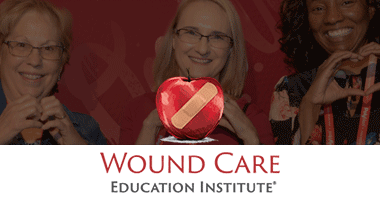
September 7 – September 10

Xianjie Yang, Huan Wang, Zhiqiang Song, Qiquan Chen Department of Dermatology, Southwest Hospital, Army Medical University, Chongqing, People’s Republic of China

Zahraa Mansoor, Ali Modaweb


Anna Brunauer, René D. Verboket, Daniel M. Kainz, Felix von Stetten, and Susanna M. Früh
PENSACOLA, Fla., Aug. 1, 2022 /PRNewswire/ — Regenative Labs, a leading HCT/P manufacturer, and AAPC, the nation’s largest medical coding, training, and certification association, are pleased to announce a strategic healthcare compliance collaboration. By combining AAPC’s medical training and credentialing expertise with Regenative Labs’ human tissue allografts, together both organizations will support the pioneering of the first Wharton’s jelly allografts to be assigned a Q code and be approved for application directly to a defect using a syringe.
“This is an important step in furthering the mission of educating providers and elevating healthcare outcomes and we’re proud to be a part of it,” shared AAPC CEO, Bevan Erickson.
Regenative Labs received approval from the Centers for Medicare & Medicaid Services (CMS) to cover CoreText™ and ProText™, the first Wharton’s jelly allograft products recognized as a 361 HCT/P by CMS regulated under 21CFR 1271.10, establishing a new Level II HCPCS code Q4246 “CoreText or ProText, per cc.” According to CMS, both solutions provide the extracellular matrix needed for the infiltration, attachment, and proliferation of cells required to repair damaged tissue. They are typically used for muscle and cartilage tears and help repair damaged tissue due to wounds and tissue defects and are applied directly to the defect using a syringe.
Regenative Labs, now seeking to collaborate to further HCT/P compliance, recognizes the value AAPC brings to the healthcare industry as the world’s leading healthcare association, with more than 200,00 members and 30+ years of supporting healthcare professionals, providers, payers, and health systems
AAPC will deliver healthcare providers important coding resources, including full skeletal illustrations and applicable DX codes for Regenative Labs Wharton’s jelly allografts products for specialties, including Orthopedics, Pain Management, Podiatry, and Rheumatology. In addition, AAPC will create a customized web-based training module to ensure providers understand how to utilize more specific homologous applications with current DX codes to support accurate procedural reimbursement for these products.
“We look forward to the clarity this collaboration will bring to the market allowing proper documentation of homologous use applications,” said Regenative Labs CEO Tyler Barrett.
Regenative Labs firmly believes that no other organization understands coding regulations and documentation requirements better than AAPC, leading AAPC to be the right partner for this important project.
About AAPC: AAPC’s mission is to advance the business of healthcare by providing professional training, industry-standard certifications, and comprehensive solutions to individuals and organizations across medical coding, billing, auditing, compliance, and practice management. As the most trusted source for driving accuracy, profitability, and peace of mind, AAPC helps healthcare organizations reach the full potential of their revenue cycle. Learn more at AAPC’s website: www.aapc.com
About Regenative Labs: Regenative Labs produces regenerative medicine products to address the root cause of a patient’s conditions using Wharton’s Jelly innovations rather than masking the pain with other treatments. Regenative Labs works closely with scientists, physicians, hospitals, and surgery centers to constantly monitor and improve patient progress and outcomes for new product development. Formed by veteran industry professionals familiar with daily challenges of innovations in healthcare, the company provides effective, non-addictive, non-invasive options for patients. Regenative Labs has a laser-focused, expert product research and development team which follows FDA guidelines of minimal manipulation for homologous use. The company adheres to AATB and FDA guidelines. Learn more at Regenative’s website: www.regenativelabs.com
SOURCE Regenative Labs
This article was originally published here

Heba Tallah Mohammed, Robert L. Bartlett, Deborah Babb, Robert D. J. Fraser, David Mannion


by Elizabeth Hogan Hamacher, MHL, BSN, RN, VP of Clinical Services and Support,


A Systematic Review of Clinical Evidence and Future Directions
Learn about wound care and healing wounds with hyperbaric oxygen therapy.
Hosted by Brian Finestein, Chief Executive Officer of Saint Clare’s Health, ‘Let’s Talk Health’ is a FREE ONLINE community series which provides accurate, trusted, and current information on health issues.





More than one-third of U.S. adults gained 10 percent body weight or more over the last 10 years, according to a study recently published in the Journal of Obesity

A Swedish study has found two sodas a day could double the risk of diabetes – even if they are diet versions.

The Tumor suppressing protein P53, already known as the guardian of the genome for its cancer-fighting action by which it blocks cell division in case of malignancy, is now also getting attention for its role in tissue repair in a study by molecular biologists from the universities of Bristol and Cambridge

Wound healing is highly regulated, but oxidative stress (OS) can disturb this healing process in chronic wounds.

into wound healing products

topical gene editing to close complex cutaneous wounds

among Nurses Working in South Wollo Zone Government Hospitals, Ethiopia

for its Synthetic Resorbable Hybrid-Scale Fiber Matrix, Restrata®
Joins Cerner Code Program
WoundZoom Digital Wound Management solution now available in Cerner’s App Gallery
STEVENS POINT, WI – July 27, 2022 – Perceptive Solutions, Inc., developer of WoundZoom Digital Wound Management, today announced its integration partnership with Oracle Cerner and the availability of WoundZoom in the Cerner Code Program App Gallery. This partnership provides a secure and reliable exchange of wound care data between WoundZoom and a facility’s Cerner EHR system.
Perceptive Solutions joins the Cerner Code Program as a trusted integration partner so our customers can leverage the benefits of our validated application, WoundZoom, while eliminating additional steps in their workflow. Data captured using WoundZoom at the bedside, such as precise wound measurements, images, and clinical assessments automatically sync to patients’ charts, creating a more efficient workflow and a complete patient record in the EHR.
“Our innovative digital wound management solution enables clinicians to spend more time with patients through automated charting, wound imaging, and elimination of the manual measurement process. Cerner is a leading EHR provider for inpatient facilities and we are excited to provide accessibility of WoundZoom to Cerner customers,” said Mark Lacerte, President of Perceptive Solutions. “The technology integration through Cerner’s validation process enables a secure and reliable data flow from our solution into Cerner’s clinical charts. This enables healthcare facilities to more efficiently share valuable wound care data between both clinical and administrative team members within their EHR.”
About Perceptive Solutions
Perceptive Solutions modernizes the practice of wound care with technology-enabled systems designed to increase clinical efficiency, improve care quality, and mitigate risk. Integrating smoothly with your EHR, WoundZoom utilizes the latest AI and imaging technology to capture accurate wound images and measurements from your smart device, automatically prompt and document appropriate actions, and create a continuous, standardized clinical record across shifts, floors, and facilities. For more information, visit https://perceptivesol.com/.
Media Contact
Karen Guzdzial
Director of Marketing
(727) 225 7944
karen.guzdzial@woundzoom.com

A Comprehensive Review of Literature


Matching Advanced Wound Care Therapy to Wound Conditions



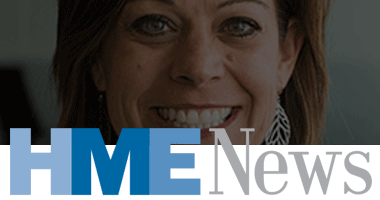



That day I had operated on a patient who was suffering with a non-healing ulcer on his leg for a long time, then followed up on my patient in ward suffering with bed sores and another patient with diabetic foot wound

It is intended to pave the way for improving precision-based medicine when treating diabetic foot ulcers.



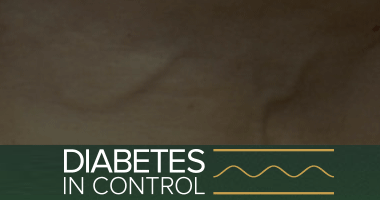
Study Confirms the Utility of MolecuLight to Inform Clinicians to the Presence and Location of Clinically Significant Bacteria and Improves Treatment Plans & Outcomes over Conventional Diagnostic Methods
LEEDS, UK and TORONTO, July 13, 2022 /PRNewswire/ – MolecuLight Inc., the leader in fluorescence imaging for detection and localization of elevated bacterial load in wounds, announced the publication of an independent, blinded randomized controlled trial in Diabetes Care. The publication on this 56-patient trial, titled “The use of Point-of-Care Bacterial Autofluorescence Imaging in the Management of Diabetic Foot Ulcers: A Pilot Randomized Controlled Trial“1 reported that the use of a MolecuLight i:X® device to visualize the presence of elevated bacterial burden in wounds doubled 12-week wound healing rates (204%) in diabetic foot ulcer patients over standard-of-care alone.

Diabetes is a significant global health ailment: over 416 million people have diabetes worldwide2 and 25% of these patients develop a diabetic foot ulcer (DFU)3, greatly diminishing quality of life and increasing the need for costly and extended treatment. In the UK, the NHS spends £1 billion ($1.25 billion US) annually on DFU care and management24.
“As a clinician in wound care, especially when managing patients with chronic wounds, the holy grail is improvement in wound healing rates”, says David Russell, Associate Professor in Vascular Surgery at University of Leeds and lead author in the study. “In our randomized controlled trial, the results were impressive – the use of a MolecuLight device to inform our wound care decision-making helped us double the number of wounds that were healed at 12 weeks. This has benefits for the patient and our healthcare system.”
Patients were stratified into two groups, one in which the MolecuLight device was not used, and one in which clinicians used the MolecuLight device bi-weekly to assess diabetic foot ulcers for the presence of elevated bacterial burden. For the MolecuLight group, fluorescence imaging was performed after treatment. Fluorescence indicated the presence of elevated bacterial burden in over 80% of the wounds. Additional treatment based on imaging findings was performed as the discretion of the clinician, and most often included further debridement focused on the regions with elevated bacterial loads. Importantly, there was no increase in antibiotic prescribed in the MolecuLight group.
Alongside the impressive 2-fold improvement in healing rates, this study showed an association between baseline fluorescence and wound outcomes. Of the patients with negative fluorescence images at the baseline visit, 53.9% healed at 12-weeks, versus 37.5% with positive baseline fluorescence images. In other words, patients were 36% less likely to heal at 12 weeks if their wound was positive for high bacterial loads at the beginning of their treatment, as depicted by MolecuLight. Wound area reduction was superior in the MolecuLight arm and patient quality of life diverged toward improvement in the MolecuLight arm at 4 weeks and toward deterioration in the control arm at 12 weeks.
“To improve decision-making and care with DFU patients we must be able to measure what we manage. The MolecuLight i:X, as illustrated by the results in this RCT, is a powerful tool for screening DFUs for infection as well as monitoring new or worsening bacterial burden over time”, says David G. Armstrong, Professor of Surgery, Director of the Southwestern Academic Limb Salvage Alliance (SALSA) at Keck School of Medicine of the University of Southern California as well as the US-appointed delegate to the International Working Group on the Diabetic Foot (IWGDF). “This new study provides further data for the improved healing rates and improved patient care that can be achieved in a clinic with routine use of fluorescence imaging to detect wound bacteria.”
“We congratulate Dr. Russell and the team at Leeds for their excellent study and publication that shows the utility of MolecuLight to detect elevated bacterial burden and to inform clinical decision-making at the point-of-care”, says Anil Amlani, MolecuLight’s CEO. “A doubling of 12-week wound healing is a significant outcome and is consistent with what thousands of wound care clinicians are experiencing worldwide, that MolecuLight enables clinicians to deliver superior, proactive bacterial/infection management that improves wound outcomes”.
The Leeds Diabetes Limb Salvage service is now using the MolecuLight device to image all patients with wounds that are failing to achieve a healing trajectory within 4 weeks. To help manage patient volumes, patients who are negative with MolecuLight are triaged, and are then referred to community care as their wounds are considered manageable and able to achieve a healing trajectory.
This new RCT is part of a broad body of clinical evidence showing the many benefits of the MolecuLight i:X and DX devices across the range of wound care applications to help inform and improve clinical decision-making. This list of clinical evidence includes over 60 peer-reviewed publications and 1,500 studied wound patients.
About MolecuLight Inc.
MolecuLight Inc. is a privately-owned medical imaging company that has developed and is commercializing its proprietary fluorescent imaging platform technology in multiple clinical markets. MolecuLight’s suite of commercially released devices, including the MolecuLight i:X® and DX™ fluorescence imaging systems and their accessories, provide point-of-care handheld imaging devices for the global wound care market for the real-time detection and localization of elevated bacterial load in wounds and for digital wound measurement. MolecuLight procedures performed in the United States can benefit from an available reimbursement pathway including two CPT® codes for physician work to perform “fluorescence imaging for bacterial presence, location, and load” and facility payment for Hospital Outpatient Department (HOPD) and Ambulatory Surgical Center (ASC) settings through an Ambulatory Payment Classification (APC) assignment. The company is also commercializing its unique fluorescence imaging platform technology for other markets with globally relevant unmet needs including food safety, consumer cosmetics and other key industrial markets.
For more information, contact:
Rob Sandler
Chief Marketing Officer
MolecuLight Inc.
T. +1.647.362.4684
rsandler@moleculight.com
www.moleculight.com
The platform serves as a comprehensive resource for podiatry news and information to aid clinical decision-making and improve patient outcomes
MALVERN, Pa., July 12, 2022 /PRNewswire-PRWeb/ — As healthcare professionals across the podiatry community manage an ever-changing and complex field, HMP Global, the leading healthcare event and education company, today announced the launch of two value-added offerings, PodiatrySource and the Podiatry Learning Network.
The Podiatry Learning Network serves as the premier digital hub for podiatrists and offers direct access to clinically relevant news and information, expert perspectives, and continuing education. The network joins HMP Global’s portfolio of well-respected learning platforms dedicated to serving as online information hubs, and is a singular destination offering practical, relevant content and education guided by podiatry professionals.
Visitors to the new network can create a customized experience, selecting topic preferences most pertinent to them; receive regular e-mail updates with breaking news and carefully created content; grow professionally with the network’s repository of education; and connect with other podiatry colleagues around the world through the platform’s networking options.
“With the creation of the Podiatry Learning Network, HMP Global is delivering a single, definitive resource that podiatry professionals can rely upon to access important clinical knowledge on new therapies and treatments on a broad spectrum of topics, and enjoy a highly specialized content experience,” said David DePinho, President, HMP Global. “Healthcare professionals in the podiatry field will benefit from this comprehensive resource to receive ongoing professional development and provide the highest quality of patient care.”
PodiatrySource
HMP Global is also launching PodiatrySource, a one-stop resource with independent, clinically reviewed, and unbiased information to help clinicians make informed decisions about podiatry care products.
Powered by Podiatry Today, the award-winning, premier publication and online platform, PodiatrySource will reach buyers with the trusted information they need to act and make decisions about product selection and purchasing. It will provide 24/7 access to information on an interactive, user-friendly digital platform.
“The Podiatry Today audience is invested in providing patients optimal care and staying abreast of the latest product offerings across the field is part of how they achieve this goal,” said Jennifer Spector, DPM, FACFAS, Managing Editor of Podiatry Today, a trusted educational resource in podiatric medicine and surgery that provides engaging content to help clinicians improve patient care. “Creating PodiatrySource is a natural synergy of the education provided by Podiatry Today, with robust information about innovations provided by companies in the podiatric space.”
PodiatrySource currently highlights products focused on the office-based practitioner, and future updates will include more products and companies to best serve the full foot and ankle medical and surgical community, Spector said. PodiatrySource is open access with no subscription required for use. Industry contacts may submit product information through the website, and enhanced opportunities are available.
“PodiatrySource is designed to quickly become podiatry’s most relied upon tool to navigate the many options for products and services available to healthcare professionals in the podiatry community,” DePinho said. “It offers credible, trusted, non-biased clinically reviewed content that clinicians can use during the decision-making and purchasing processes.”
The new PodiatrySource resource guide is modeled after the highly successful WoundSource product reference guide. First published in 1998, WoundSource now includes more than 1,700 products manufactured by more than 200 wound care companies. Its digital companion, woundsource.com, includes product lists and reviews as well as articles, blogs by industry thought leaders, white papers, and other educational resources for wound care professionals.
For more information about PodiatrySource and the Podiatry Learning Network, visit hmpgloballearningnetwork.com/site/podiatrynet.com.
ABOUT HMP GLOBAL
HMP Global is the force behind Healthcare Made Practical — and is an omnichannel leader in healthcare content, events, and education, with a mission to improve patient care. The company produces accredited medical education events — in person and online via its proprietary VRTX virtual platform — and clinically relevant, evidence-based content for the global healthcare community across a range of therapeutic areas. Its brands include the HMP Global Learning Network, healthcare’s most comprehensive source for news and information; Psych Congress, the largest independent mental health meeting in the U.S.; the Evolution of Psychotherapy, the world’s largest independent educational event for mental health professionals; the Leipzig Interventional Course (LINC), the leading, global gathering for interdisciplinary cardiovascular specialists; EMS World Expo, North America’s largest EMT and paramedic event; and the Symposium on Advanced Wound Care (SAWC), the largest wound care meeting in the world. For more information, visit hmpglobal.com.
Media Contact
Sandi Beason, APR, HMP Global, (601) 573-1737, pr@hmpglobal.com
SOURCE HMP Global




and Increase Communication Across Inpatient Complex Wound Care Teams



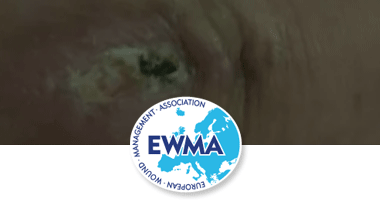



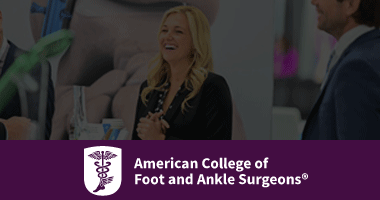

Wounds UK are pleased to announce the call for abstracts for the 2022 Wounds UK Annual Conference, held at the Harrogate Convention Centre, which will be held on 7-9 November 2022 at the Harrogate International Centre.
To submit your abstract use the following link: www.surveymonkey.co.uk/r/WUKH22Abstract
Poster presentations will be presented on electronic poster displays only, no hard copy posters will be on display.
Entries for the e-poster exhibition require you to submit an abstract. Every entry received will automatically be considered for the Wounds UK Award for Excellence 2022.
All abstracts will be reviewed by our judging panel, who will be looking to accept submissions that display high levels of innovation, relevance to current and/or best practice and provide high-quality research/evidence.
Award
The winner of the Wounds UK Award for Excellence will receive a free 3-day delegate pass with entrance to the gala dinner.
NANCY MORGAN
Every wound-care clinician treats diabetic patients regardless of your care point. In this course, Nancy will help you evaluate the wound, identify the best plan of treatment and steer you away from the potential setbacks for better healing rates and overall patient outcomes.
Objectives:
A National Population-Based Retrospective Cohort Study
Rosemary C Chamberlain, Kelly Fleetwood, Sarah H Wild, Helen M Colhoun, Robert S Lindsay, John R Petrie, Rory J McCrimmon, Fraser Gibb, Sam Philip, Naveed Sattar, Brian Kennon, Graham P Leese
Objective: To describe incidence of foot ulceration and amputation-free survival associated with foot ulceration status in a national population-based cohort study of people with diabetes … Research design and methods: The study population included 233,459 people with diabetes who were alive in Scotland on 1 January 2012 identified from the national population-based register (national prevalence 4.9%). Characteristics of patients identified from linked hospital and mortality records during follow-up to the end of November 2017 were compared by outcome. Cox regression was used to assess the association between history of foot ulcer and amputation-free survival … Results: The population included 23,395 people with type 1 diabetes and 210,064 people with type 2 diabetes. In total there were 13,093 (5.6%) people who had a previous foot ulceration, 9,023 people who developed a first ulcer, 48,995 who died, and 2,866 … read more